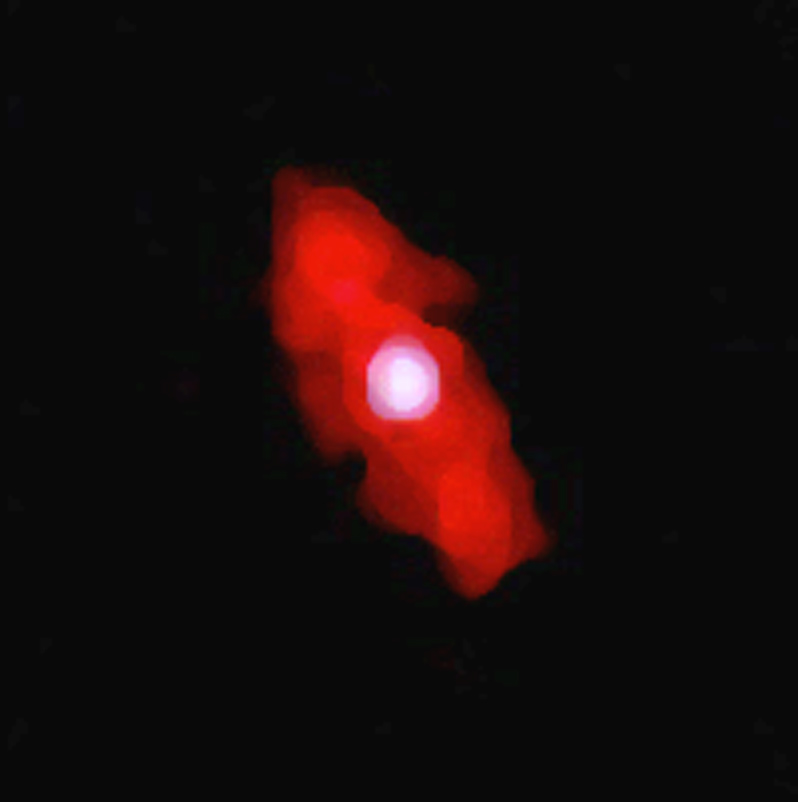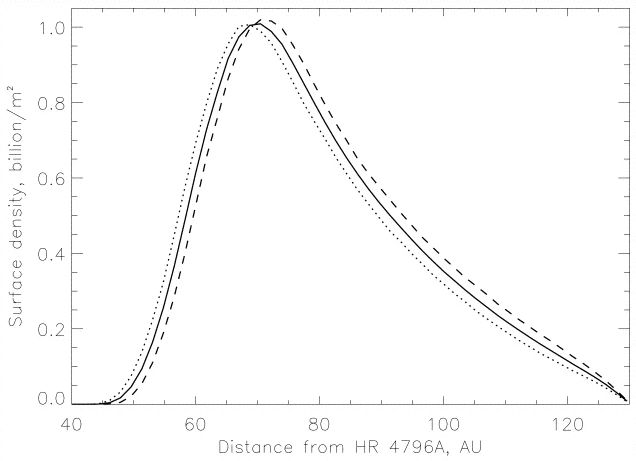
Image credit: Koerner, D.W., Ressler, M.E., Werner, M.W., and Backman, D.E., 1998, "Mid-infrared imaging of a circumstellar disk around HR 4796: mapping the debris of planetary formation," ApJ Letters, pp. 503, L83 Copyright, please do not reproduce without permission from the authors.
HR 4796A at 20 microns (Q-band)
HD 109573 HR 4796A
SAO 203621 HIP 61498
RA (2000) = 12 36 01.0316
Dec (2000) = -39 52 10.219
SpT = A0V V =
5.78 mag d = 67.1 pc
Proper motion (mas/yr) = -55.92 -24.00
Luminosity = 21 Lsun, Mass = 2.5 Msun
The dust disk around HR 4796A is seen here in
thermal emission.
These data were the first to resolve the disk, showing its
orientation and geometry, and confirming
a central depletion of dust. Wyatt et al. (1999) have analyzed
these data in detail and derive a dust surface density distribution
as shown below (an azimuthal average):
The dominant grain size in the Wyatt et al. analysis is 2.5 microns,
and they find that that the surface density is zero within 45 AU radius.
Beyond the peak surface density at 70 AU, the surface density falls
off as a power law with index of -3.
Basic facts about HR 4796A:
1) age is estimated to be between 5 Myr and 11 Myr
2) observed dust grains are approximately 2.5 microns in diameter
3) peak of dust scattered light is at 70 AU northeast-southwest of the star
4) the number density of grains in the central hole is no greater than
3% of the grain number density in the ring
5) young, low mass (M2-M3) binary companion, HR 4796B,
is located to the southeast (PA = 226 degrees)
at a projected distance of 515 AU (7.7").
